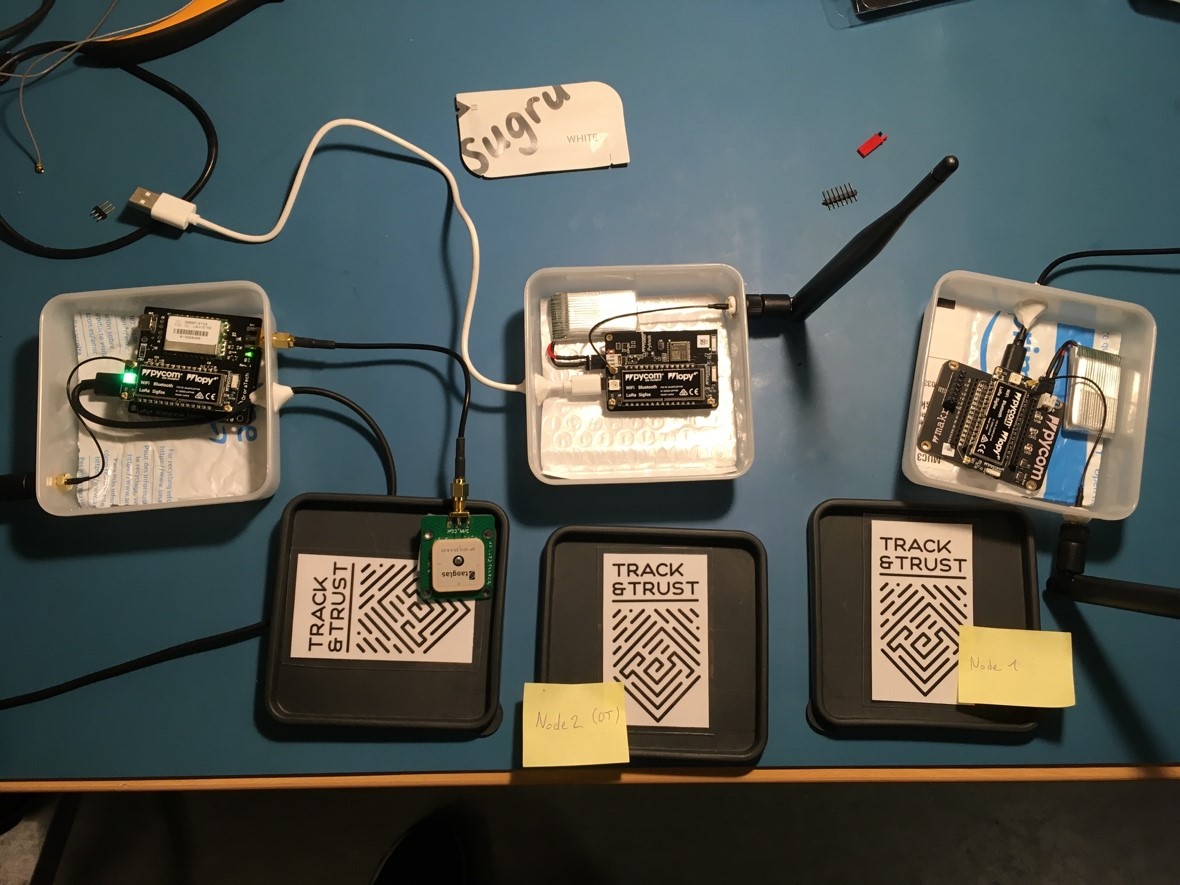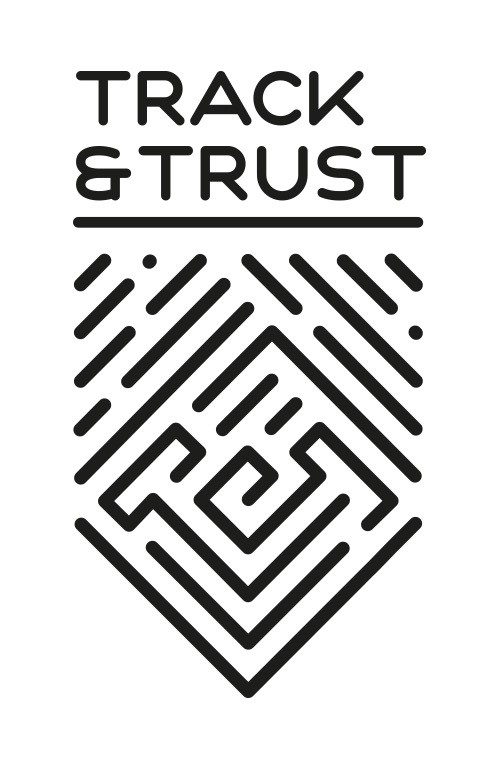
Objectives of the service
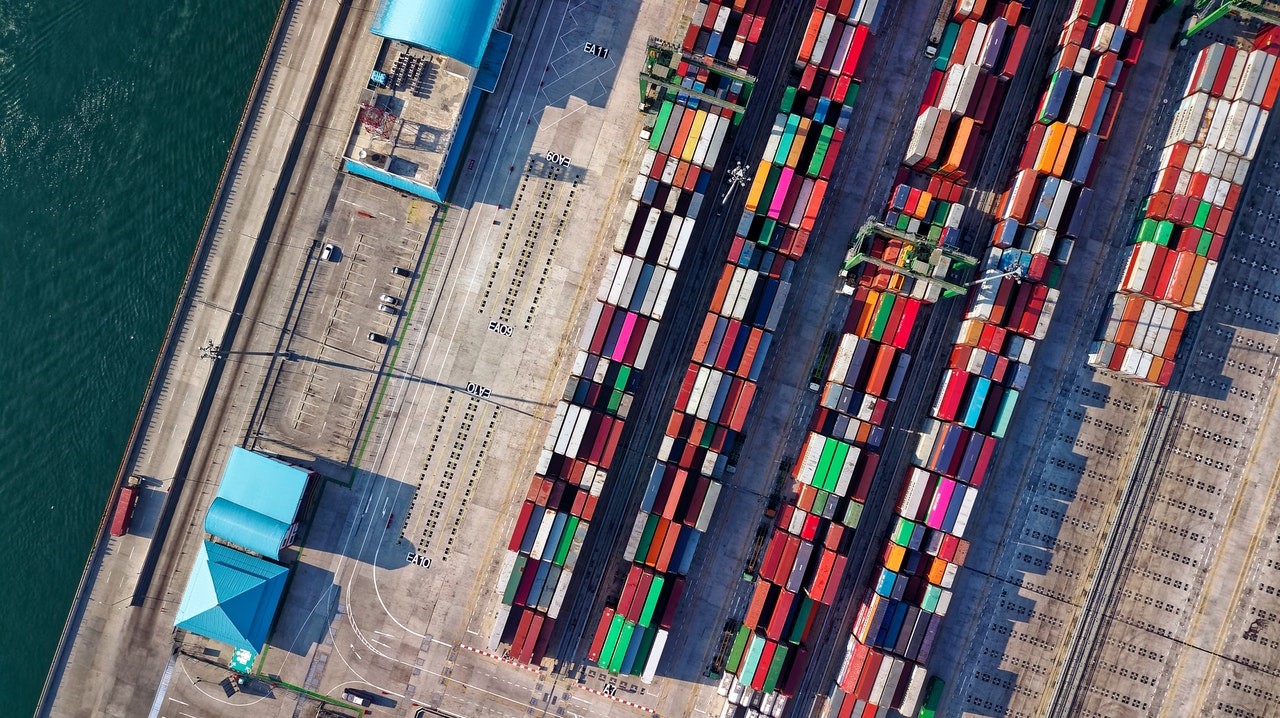
Humanitarian agencies the world over have to manage complex supply chains over huge distances under highly demanding circumstances.
They face a number of key problems:
- Establishing who has custody of goods is often a matter of guesswork and bills of lading are often sent via email, fax or even post.
- Almost all processes associated with humanitarian supply chain tracking are manually processed and prone to human error.
- Chain of custody usually breaks down after the consignee receives goods from customs in-country.
- Non-existent or destroyed communications infrastructure hampers supply chain tracking.
- Trust in this ad hock intransparent system is low between the stakeholders.
Track & Trust seeks to increase trust by providing a blockchain-backed single source of truth for all stakeholders. The immutability and tamper resistance of the blockchain protocol enable exchange of custody from one stakeholder to another in a transparent and trusted manner. Backed by a kickstarter project from the European Space agency, Track & Trust integrates an efficient IoT protocol for transmitting geolocation, custodian transactions and GNSS metadata to a globally distributed ledger via satellite uplink. Cost reductions of an order of magnitude have been observed in similar projects and are projected here as well.
Users and their needs
There are two main customer groups for the Track & Trust system.
- Non-Governmental Humanitarian Organizations
- Governmental Humanitarian Aid Organizations
Within the humanitarian supply chain there are usually five major classes of stakeholders/actors all of which need tracking services.
- Humanitarian Officer (HO): Initiates an aid shipment
- Supplier (SUP): Obtains and organizes goods in shipment and hands over goods to a logistics partner.
- Logistics Partner (LP): Receives a handover of goods from the SUP and is responsible for transporting goods until handing off to the consignee at the port of entry.
- Consignee (CON): Receives the goods from the LP and contracts with the IP for last mile transport.
- Implementing Partner (IP): This actor is contracted by the CON and actually arranges the transport of aid goods to people in need.
Operational Challenges:
- The actors do not necessarily trust one another so a single source of blockchain-based truth needs to be established.
- The availability of installed terrestrial communications infrastructure often to breaks down once the shipment reaches the CON.
- Often handovers to the IP on the ground are not tracked with current systems, let alone tracked until the actual distribution occurs.
- Even if the shipments are tracked usually the individual items in the system are not.
The system can be deployed worldwide with initial testing in a number of pilot countries determined by humanitarian agency partners dependent on their needs. Interested parties include US AID, UK AID, World Food Programme and UN Women.
Service/ system concept
The Track & Trust System includes four critical functionalities which together enable last mile tracking of humanitarian goods.
- Highly usable user interface.
- Blockchain-based transaction immutability: The system increases user trust with a transparent tamper-resilient system for recording consignment and handovers as well as geolocation data.
- Efficient satellite data uplink: Track & Trust lowers cost through an efficient use of short burst data transmissions.
- LoRa-Based Mesh Network: Last mile data transmission to the satellite base station is accomplished with a low-power long range radio mesh network. This low-cost self-healing network is deployed by the last mile implementing partners alongside their deliveries.
The system is designed to be upgraded in a modular fashion advancing from Proof of Concept to Pilot and on to Production. At each point along the journey toward production stakeholders are interviewed to guide development and ensure usability. Actual test shipments during the PoC and pilot phases demonstrates real-world utility.
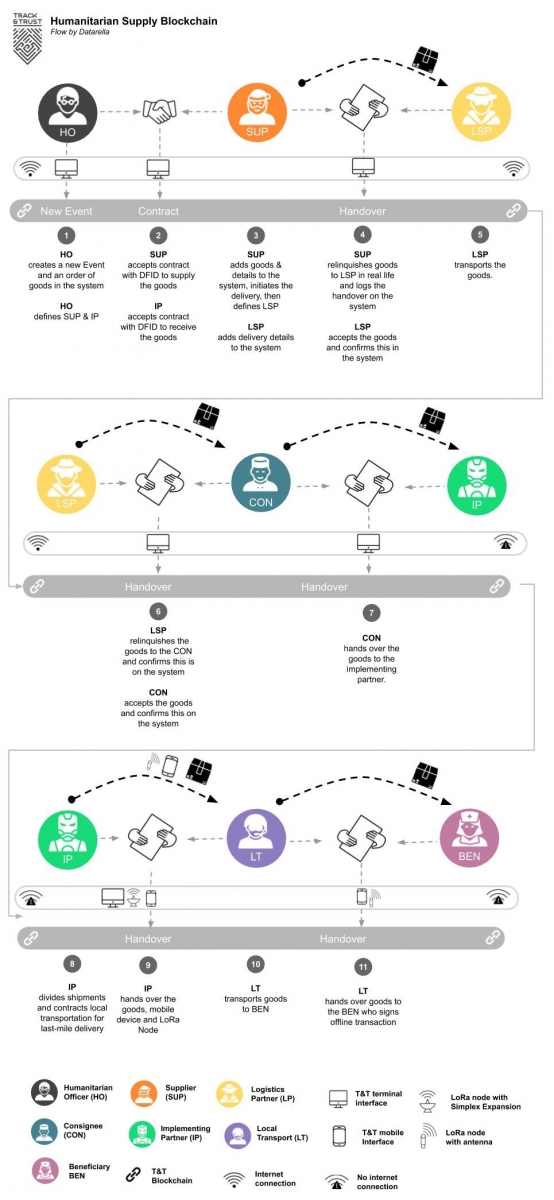
Space Added Value
To facilitate rapid prototyping, Blockchain expert Datarella partnered with decentralized network experts at Weaver Labs Ltd and satellite hardware experts at Orbital Oracle Technologies to build out the Track & Trust prototypes. To date, two satellite uplink prototypes have been tested and integrated with a prototype LoRa Mesh Network. The LoRa Mesh network transports presigned blockchain transactions from remote areas with little connectivity. These transactions are then uploaded via a Globalstar STX3 Simplex transmitter along with GNSS metadata gathered from an offline capable mobile application deployed with Implementing Partners. Once the satellite posts the information, it is immutably recorded to the blockchain. This data is then made available to all the relevant stakeholders through the Track & Trust webapp.
Competing systems, at best, do not offer immutability and often rely solely on data intensive broadband connections not optimized for IoT. More commonly however, the main competition is voice calls via satellite phone and manual counts of shipment goods. Track & Trust offer huge added value by leveraging commercially available space-based systems and combining these systems with bleeding edge blockchain and IoT technology.
Continual optimization of the system through testing and high stakeholder involvement drive Track & Trust architecture development.
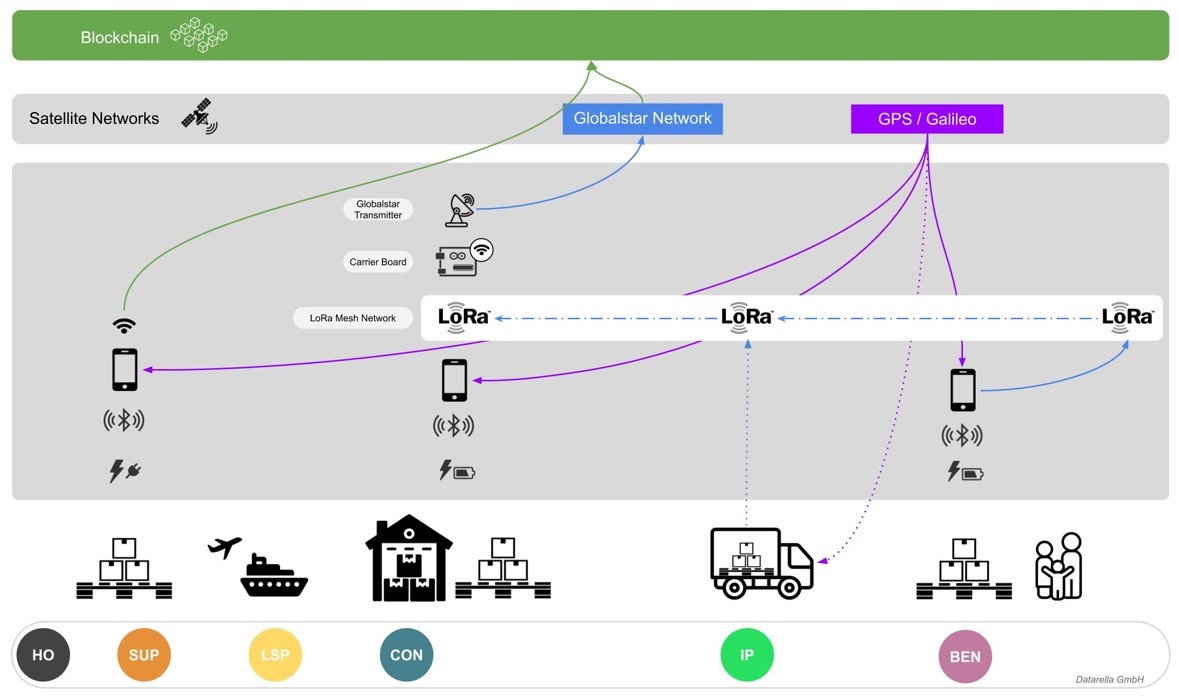
Current Status
Datarella GmbH has currently prototyped the Track & Trust product as a proof of concept for the blockchain based handover of shipments between the actors within the humanitarian supply chain. It is based on a private permissioned Ethereum blockchain and currently implemented as a responsive web app. A test shipment has been successfully executed in collaboration with DFID and FTL as well as a number of other stakeholders in the humanitarian supply chain. A second test shipment is in the planning stages with WFP.
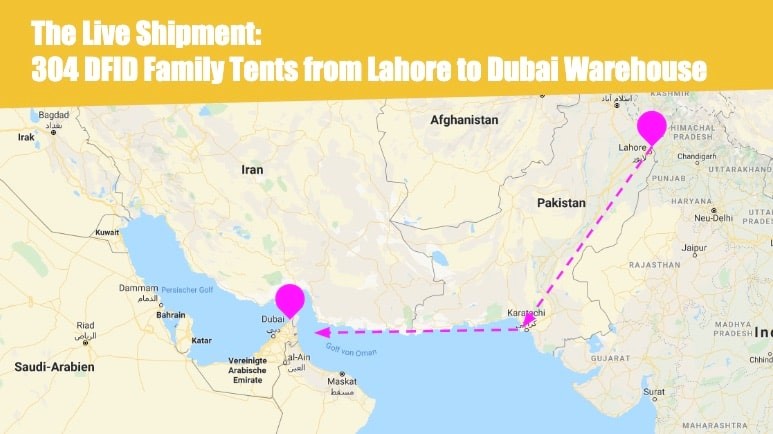
Numerous stakeholder interviews have been completed, several memorandums of understanding have been signed with key stakeholders and the related business planning activities are in the finalization stage. Technical feasibility has been proven with two satellite/LoRa Mesh hardware prototypes. Currently Datarella together with its partners is preparing to apply for entry into the ESA Business Applications and Space Solutions program for a Demonstration project with the aim of full commercialization.
